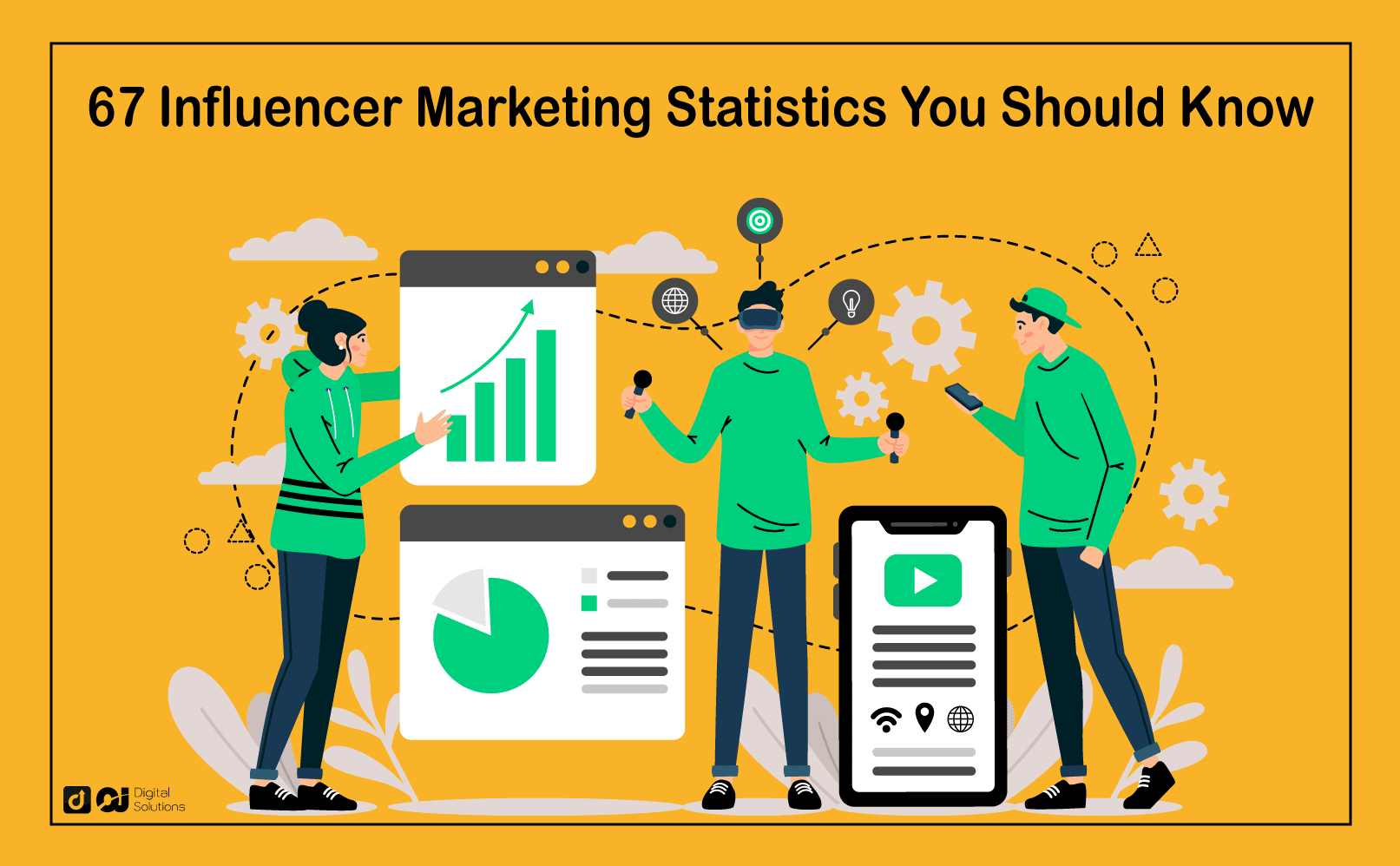As social media becomes increasingly popular, businesses are seeing influencer marketing as a way to reach new customers.
What is influencer marketing? And how effective is it?
In this guide, I’ll explore the world of influencer marketing and answer some of the most common questions about it.
I will also share some top influencer marketing statistics that show how powerful this marketing strategy can be.
So if you want to find out the latest influencer marketing statistics, read on!
What Is Influencer Marketing?

At its core, influencer marketing is a strategy that involves using key individuals to promote and sell products or services.
These individuals are also often referred to as “brand advocates,” “content creators,” or simply “influencers.”
Influencers can be anyone from celebrities to social media personalities to bloggers.
They use their own personal brand and platform to reach a large audience and help promote products or services in a powerful, authentic way.
There are several reasons why influencer marketing has become popular in recent years.
For one thing, it allows businesses to connect and engage with their target audiences on a more personal level than traditional advertising methods.
In addition, these influencers already have a massive following on social media or other online platforms.
They can reach large numbers of potential customers in a relatively short period.
Types Of Influencers
There are various types of influencers, each with unique qualities and attributes. Here are the most common types:

Celebrities
Celebrities have large audiences and extensive media coverage, so they can effectively promote products or services.
However, they also tend to charge more than other types of influencers and may not always be a good fit for every brand.
Social Media Influencers
Social media influencers are individuals with a strong presence on social media platforms like Instagram, Facebook, YouTube, or Twitter.
They have a large following and typically focus on a specific niche, like fashion, beauty, fitness, travel, or lifestyle.
Because social media marketing influencers have many followers, they can often drive a lot of traffic and engagement with the brands they work with.
Bloggers
Bloggers also have large audiences, but their content tends to be more focused.
They typically cover topics like lifestyle, food, or entertainment rather than specific products or services.
Generally, bloggers are a great fit for brands that want to promote a product or service to a specific target market.
Vloggers
Vloggers are similar to bloggers, except their content is typically video-based rather than written.
Like social media influencers, vloggers can drive a lot of traffic and engagement for brands that they work with.
They are also often quite affordable, making them a great option for many businesses.
Influencers can also be grouped depending on the number of followers they have:
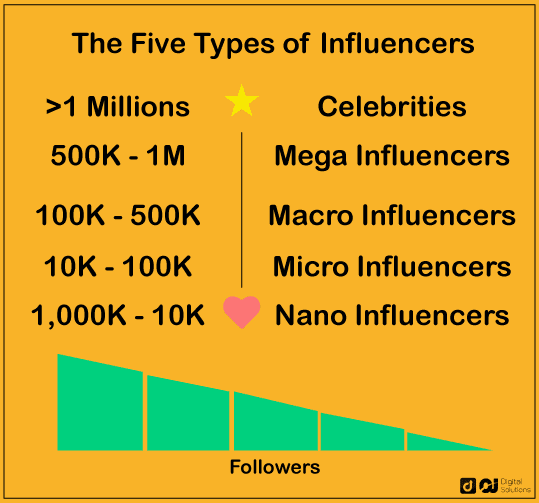
1 – Mega-influencers: These are individuals with large audiences and extensive media coverage.
This makes them highly effective at promoting products or services.
Celebrities and people with over a million followers fall into this category.
2 – Macro-influencers: These are individuals with smaller but still significant audiences and media reach, making them a good fit for many brands.
Individuals in this category have between 500,000 and 1 million followers.
3 – Mid-tier influencers: These influencers have smaller audiences than macro-influencers but still have a significant reach, making them an attractive option for many businesses.
Influencers in this category have between 50,000 and 500,000 followers.
4 – Micro-influencers: These are individuals with smaller audiences who may not have as much media coverage.
However, they can still effectively promote products or services to their loyal followers.
Influencers here have between 10,000 and 50,000 followers.
5 – Nano-influencers: These are individuals with relatively small audiences who may not have as much media exposure but still have a significant impact on their followers.
They can be effective for brands that want to promote products or services to niche audiences.
Influencers in this group have between 1,000 and 10,000 followers. They also request the smallest fees for each sponsored post.
According to eMarketer 2019, the cost of a nano influencer’s social media post ranges from $31 to $315.
Influencer Marketing Statistics

1 – According to Statista data, the influencer marketing industry might be worth more than $16 billion by 2022, up from an estimated $9.7 billion in 2021 (a 42% annual increase).
2 – Influencer marketing revenue increased from $1.7 billion in 2016 to $9.7 billion in 2021.
3 – The number of businesses and service providers that endorse the influencer marketing industry has increased along with it. Companies that employ influencer marketing grew by 26% to 18,900 globally in 2021.
4 – On Facebook, video ads generate more engagement than images do. In contrast to images, video ads encourage users to pause and pay focus on the content. This results in more conversions and ad clicks.
5 – 61% of shoppers trust recommendations from influencers, compared to 38% who trust branded (and frequently biased) social media content. This shows there is high value in influencer marketing.
6 – The influencer marketing model works exceptionally well for e-commerce companies. 50.7% of the brands that collaborate with influencers have online shops.
7 – According to a Hypeauditor survey, finding smaller partners to work with on influencer marketing campaigns is simpler for ecommerce brands.
On their largest social media platform, 5,000-20,000 followers make up nearly half (47.3%) of all influencers.
Nano- and mid-tier influencers are closely behind that, with 18.74% and 26.8%, respectively.
Macro-, mega-, and celebrity influencers are the most difficult to find. Celebrity influencers make up just 0.5% of all influencers on social media.
8 – The highest engagement rates (5%), according to HypeAuditor data, are among nano-influencers with less than 5,000 followers.
When the number of followers soars, engagement seems to decline until it reaches celebrity status (1.6%).
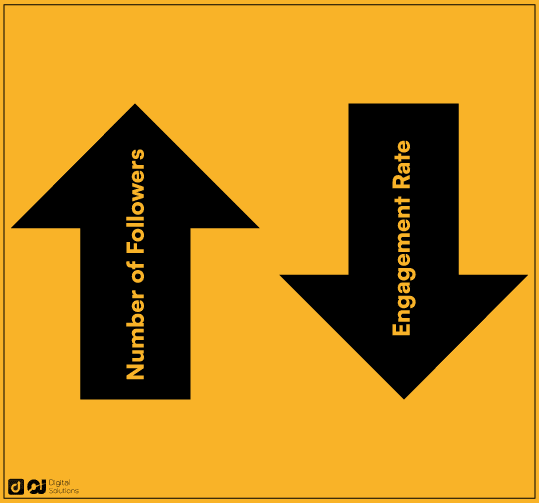
9 – 77% of marketers rank micro-influencers first on their list of suitable influencers, with macro-influencers (64%) following closely behind.
Less than one in five brands include unpaid and affiliate influencers on their list of ideal collaboration partners.
10 – Social media influencers have the most significant impact on Gen Z. This covers those who are 16 to 23 years old. As people get older, fewer people follow social media influencers.
Only 9% of Boomers, 16% of Gen X, and 23% of Millennials follow influencers on social media.
11 – Statista data shows that significantly more women than men are employed in the influencer marketing sector. Only 16% of social media influencers are men, while 84% are female.
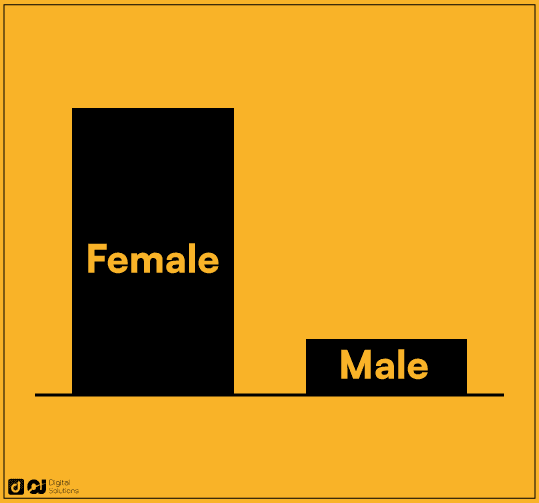
12 – Instagram is regarded by 97% of marketers as being the most effective channel for influencer marketing. The visual element allows your product to take center stage, luring social media users to your website.
13 – With 83% of marketers saying they depend on Instagram Stories, it is clear that Instagram is their company’s most significant influencer marketing hot spot.
It surpasses Twitter (35%), YouTube (45%), and Facebook (79%).
14 – Over the past year, TikTok, a fairly new influencer marketing platform, has experienced a meteoric rise in popularity. From 35.6 million users in 2019 to 65.9 million users in 2020, platform has grown by 85%.
15 – 39% of respondents report using TikTok to make purchases. Comparatively, Facebook influencer posts received purchases from 9% of the audience, especially in comparison to 22% for Instagram.
16 – Influencers on TikTok with under 15K followers outperform Instagram’s average engagement rate of 3.86% with an astounding 17.96%.
17 – In comparison to just 25% of men, one-third of Gen Z women between the ages of 16 and 24 follow an influencer on social media.
18 – According to estimates from Twitter, nearly half of users depend on influencer recommendations. Furthermore, 40% of users bought something because of those brand and influencer tweets.
19 – One of the few social media platforms with decreasing influencer marketing activity is Facebook.
Today, 68% of businesses depend on Facebook’s prospects for influencer marketing, a 13% decrease from the previous year.
20 – According to data from Mediakix, influencer marketing has an 11x higher return on investment than other forms of digital advertising, such as banner ads.
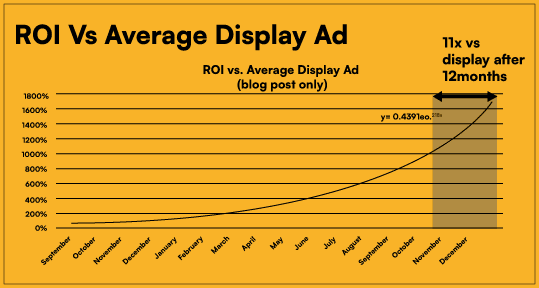
21 – According to 18% of marketers, social media platforms like YouTube and Instagram are very effective. Online advertising comes in second place in terms of ROI.
Because of this, 60% believe that influencer marketing has a better return on investment than conventional advertising.
22 – According to a survey, companies get $5.20 back for each dollar spent on influencer marketing.
Therefore, if you invest $2,000 per month in influencer partnerships, you’ll probably receive more than $10,000 in orders.
23 – Retailers will reportedly receive $4.87 in earned media value for each dollar spent on influencer marketing on Instagram, according to HypeAuditor.
24 – Influencers on social media have multiplied over the past ten years. With only a few thousand followers, individuals want to profit from Instagram.
This has led to 86% of young people choosing influence as their preferred career path.
25 – Four out of ten social media users complain about the overabundance of branded content. This ripples onto an influencer’s audience.
For false endorsements, 7 out of 10 users would stop following an influencer.
26 – Only 55% of Instagram followers are actual people, according to data. 45 percent of the total are inactive users or bots.
27 – 49% of marketers find social algorithm changes to be problematic. For influencer marketers, it can be challenging to stay current with these changes.
28 – 63% of marketers plan to boost their influencer marketing budget throughout the upcoming year.
By 2022, 72.5% of marketers will likely boost their budgets for influencer marketing. On the other hand, 5% want to make it smaller.
29 – Due to the increase in influencer marketing budgets, brands will invest approximately $4.62 billion in influencer marketing campaigns each year. Between 2021 and 2023, that is a 25% rise.
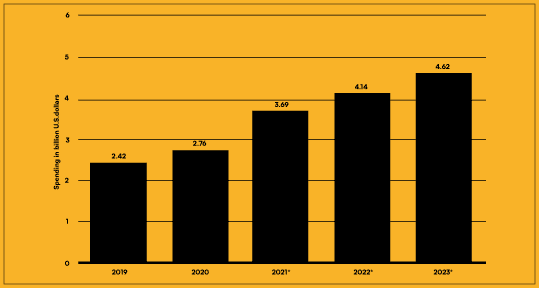
30 – It’s not surprising that Instagram will continue to be a valuable source of leads in 2022. This is given that 79% of marketers view it as a crucial component of their influencer marketing campaigns.
83% of its users go on this flexible platform to find new things.
87% of people who saw product information posts on Instagram followed a brand and proceeded to purchase something.
31 – In 2021, Zara was the brand mentioned most on Instagram, with a staggering reach of over 2 billion users and over 300,000 mentions.
32 – With over 10,000 mentions, Netflix had the most followers among all the brands on TikTok.
33 – With more than 1.1 billion views and over 76,000 mentions, Steam enjoys the most popularity on YouTube.
34 – 93% of marketers have used influencer marketing campaigns, which is now recognized as a crucial advertising tactic.
35 – Micro-influencers’ market share keeps expanding. In 2020, it held an 89% share; in 2021, it increased to 91%.
36 – In 2014, there were about 4.8 social media accounts per person. 8.4 accounts per person were available in 2020.
This means brands must adopt a cross-channel strategy when implementing their influencer marketing campaigns.
37 – Instagram influencers are most widely distributed in the lifestyle sector. Following this are family, music, photography, and beauty.
Modeling, film and television, and fitness are the industries with the fewest influencers.
38 – Among the key trends driving influencer marketing in 2022 is social commerce, which will generate $992B in sales by that year.
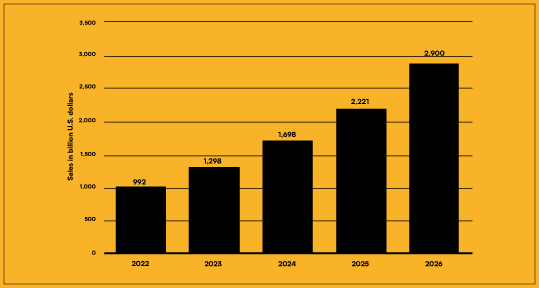
39 – 60% of marketers agreed that branded posts don’t perform as well as influencer-generated content and don’t generate as much engagement.
40 – If an influencer isn’t upfront about advertising or sponsorships, 20% of consumers are prepared to stop following them.
41 – According to a 2021 study, Black influencers earn 35% less than white content producers.
Additionally, the study found a 29% pay disparity between Black, Indigenous, and People of Color (BIPOC) influencers and their white counterparts.
42 – The number of people who will self-identify as content creators is predicted to reach one billion.
Experts anticipate that content creation will become more democratic as the creator economy expands and the influencer marketing sector changes.
43 – The size of the United States consumer market is a contributing factor to the country’s high number of influencers.
The North American cities with the most influential people are Atlanta, Miami, Los Angeles, New York, and Chicago.
44 – The United States, followed by Canada, the United Kingdom, and Australia, is where influencers based there receive the most deals.
45 – Brands typically invest $174 for every content piece an influencer creates.
You should anticipate an increase in this average spending price, given that influencer marketing expenses will likely increase in the upcoming years.
46 – The proportion of brands with a set budget for content marketing has risen from a 2020 survey by 4% to 59%.
47 – Most brands prefer to forge lasting bonds with influencers than seek a new influencer for each campaign they launch. 56% of companies employ the same influencers in various campaigns.
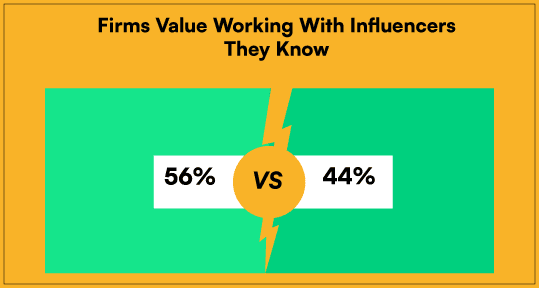
48 – There have been more brands that pay influencers in recent years. A similar percentage (34.5%) still compensates influencers with merchandise, but 34.5% now pay influencers in cash.
Additionally, 25% of brands offered discounts on products to influencers. A relatively small percentage (5.9%) preferred giveaways as payment.
49 – According to 42.3% of brands, sales and conversions are the key indicators of the success of an influencer marketing campaign.
Other businesses gauge their influencer marketing success using impressions, reach, views (29%), and clicks or engagement (32.5%).
50 – Eighty-two percent of businesses deduct influencer marketing expenses from their marketing budget.
51 – Although brands prefer to develop longer-term relationships with influencers, they still view influencer marketing as a one-time campaign rather than a continuous process.
52 – According to the Influencer Marketing Benchmark Report 2022, 5% of marketers anticipate allocating at least half of their marketing budget to influencer marketing.
77% of marketers plan to incorporate it into their marketing mix. Moreover, another 28% plan to devote 30–40% of their overall marketing budget to influencer marketing.
53 – In the BigCommerce Influencer Marketing Survey, 89% of participants said they thought influencer marketing had a higher return on investment than other types of advertising.
54 – Forbes reports that 4 out of 10 Snapchat users say they find new brands due to Snapchat celebrity posts and endorsements.
55 – The rate of engagement with followers declines as an Instagram influencer’s total number of followers increases.
Engagement rates for those with fewer than 1,000 followers average 3.6%. Only 0.76% of the time did users with more than a million followers get likes.
56 – Undoubtedly, peer pressure continues to be an important factor in consumer behavior. According to IScoop, most individuals (79%) allow their family and friends to influence them on social media when making purchases.
57 – Rather than using a network or agency, 68% of bloggers prefer working directly with a brand.
58 – By 2022, Snapchat will have 363 million users, with teenagers being its primary demographic. Brands that cater to this market are discovering a massive opportunity for influencer marketing.
59 – One of the biggest challenges is adhering to FTC transparency regulations regarding ad transparency. 18% of marketers say it’s difficult to follow FTC regulations.
60 – 60% of millennials say they are much more likely to follow YouTube influencers’ recommendations than mainstream media figures.
61 – Women’s consumer journeys appear to be significantly influenced by social media. 86% of women use social media to seek suggestions and guidance before making purchases.
62 – 51% of marketers claim that using influencer marketing has improved their ability to find new clients.
This is probably because a successful partnership will place you at the forefront of a crowd abundant with potential clients.
63 – Eight out of ten customers have made a purchase when they saw an influencer recommend it.
64 – On Instagram, 25% of all sponsored posts are in the fashion category. That makes it the most popular topic on the platform for brand collaborations.
65 – For some Millennials, their favorite YouTubers are the ones who relate to them the best. In fact, this was the opinion of 4 in 10 Millennials.
66 – The average engagement rate for TikTok influencers with 15,000 followers or less is 17.96%, which is higher than the 3.86% average for Instagram influencer marketing.
What Are the Benefits Of Influencer Marketing?
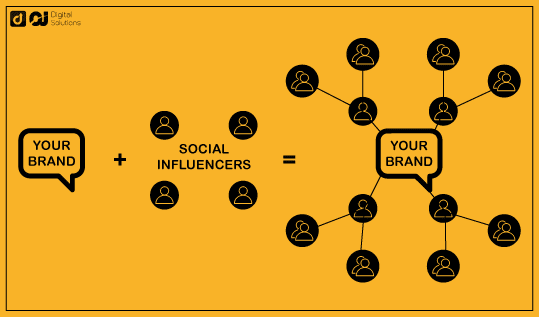
Influencer marketing is a powerful and effective tool for businesses. Some of the key benefits of influencer marketing include:
Increased Exposure and Reach
Through influencer marketing, brands can reach a much broader audience.
This is in comparison to audiences they reach through traditional advertising channels.
This increased exposure can help businesses grow their customer base and drive sales.
Cost-Effectiveness
Influencer marketing can be a more cost-effective way to promote your products or services than other forms of digital advertising, such as paid search or display ads.
You can hire smaller influencers with a more niche following or work with more prominent influencers with millions of followers.
The cost will depend on your budget.
Real-time Feedback
Another valuable benefit of influencer marketing is the immediate feedback and insights you get from your target audience.
Influencers often have loyal followers eager to provide feedback on new products or services.
They can use this information to create content that resonates with their audience.
This boosts the influencer marketing ROI.
Improved Audience Targeting
With the help of influencers, businesses can better target their ideal audience by partnering with relevant influencers.
This includes influencers with a similar customer base or interests and values.
They can then leverage these influencers’ knowledge of their audience and reach new audiences more effectively.
Greater Engagement and Brand Loyalty
By working with influencers who truly resonate with your target audience, you can build stronger relationships and foster brand loyalty.
This leads to higher engagement rates and more word-of-mouth referrals.
Improved Credibility and Trust
Influencer marketing enables brands to improve their credibility and trustworthiness in the eyes of consumers.
Businesses can leverage their authority and build trust with potential customers by working with respected and well-known influencers.
Choosing the Right Influencers
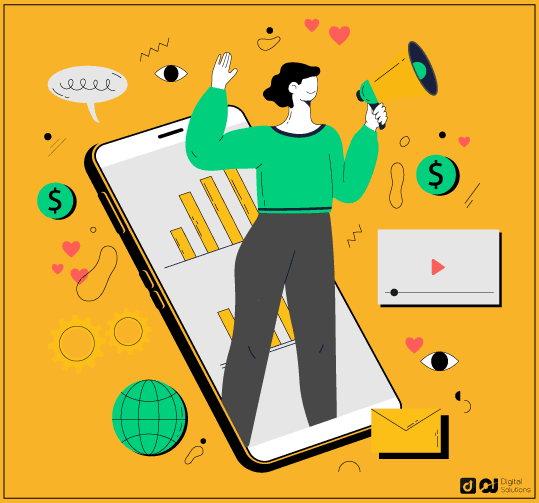
If you’re interested in using influencer marketing for your business, there are a few things you need to keep in mind.
Your Budget
How much are you willing to spend on influencer marketing? How large do you want your reach to be?
Do you have a specific budget per influencer? Are you willing to work with smaller influencers who have lower follower counts but may have higher engagement rates?
Ask yourself these questions to arrive at a reasonable budget.
Your Audience
Another important consideration when choosing influencers is your target audience.
Which influencers do your potential customers follow? Do they have similar interests or align with your brand values?
Consider doing some research to find out which influencers your target audience is following. Look for influencers with a similar audience or who share similar interests.
Your Goals
Along with your budget and audience, it’s also important to consider what goals you hope to achieve through influencer marketing efforts.
Do you want to boost brand awareness? Drive sales? Reach new audiences?
Understanding your goals will help you pick the right influencers and create more effective digital marketing campaigns.
Numbers/Engagement
Numbers are an essential factor to consider when choosing influencers for your business. Some of the key metrics to look at include:
- Number of followers
- Average engagement rate (likes, shares, comments)
- Audience demographics
- Number of posts per week or month
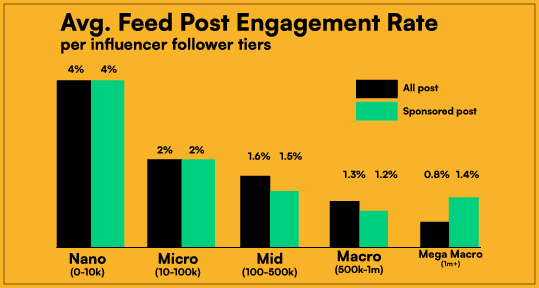
Choosing influencers with high engagement rates and a large, relevant audience that aligns with your target customer base is essential.
This can help you increase brand awareness, drive sales, and reach new audiences.
Frequently Asked Questions
Which Industry Uses Influencer Marketing the Most?
Some industries, such as fashion and beauty, are well-known for their strong use of influencer marketing.
Industries that focus on visual media, such as fashion and photography, often rely on influencers to help promote their products and reach new audiences.
However, many other industries are starting to recognize the benefits of influencer marketing as well, including healthcare, travel, and finance.
Regardless of your industry or business goals, influencers can help you reach new audiences more effectively and build stronger customer relationships.
What Are KPIs for Influencers?
KPIs, or key performance indicators, are important metrics that can indicate the effectiveness of influencer campaigns.
Some common KPIs for influencers include the number of followers, average engagement rates, audience demographics, and post frequency.
Understanding these metrics can help you evaluate the success of your influencer campaigns.
They also help you make more informed decisions about which influencers to work with.
Are Influencers Really Influencing?
Yes, influencers can be an effective digital marketing tool.
They have the ability to influence their followers and drive sales for businesses.
However, choosing the right influencers for your business is critical, as not all influencers have high engagement rates or a large, relevant audience.
By considering your influencer marketing budget, audience, and goals, you can choose the right influencers for your business.
What Age Group Is Most Influenced by Influencers?
Gen Z is one of the most heavily influenced age groups by influencers. This includes people between 16 and 23 years old.
This is due to their affinity for visual media and interest in following the latest trends.
Is Influencer Marketing 2022 Effective?
Yes, according to the latest influencer marketing statistics, influencer marketing is one of the most effective marketing strategies for businesses.
It allows you to reach new audiences, build stronger customer relationships, and increase brand awareness and sales.
The Bottom Line
I hope you found these key influencer marketing statistics helpful. As you can see, there is tremendous growth happening in this field.
So if you’re looking for a powerful marketing tool to help your business grow, an influencer marketing strategy may be the perfect solution.
By considering your budget, audience, and goals, you can choose the right influencers to help you reach your marketing goals and grow your business.
Want to understand how you can target Gen Z in your influencer campaigns? Read these Gen Z statistics.

